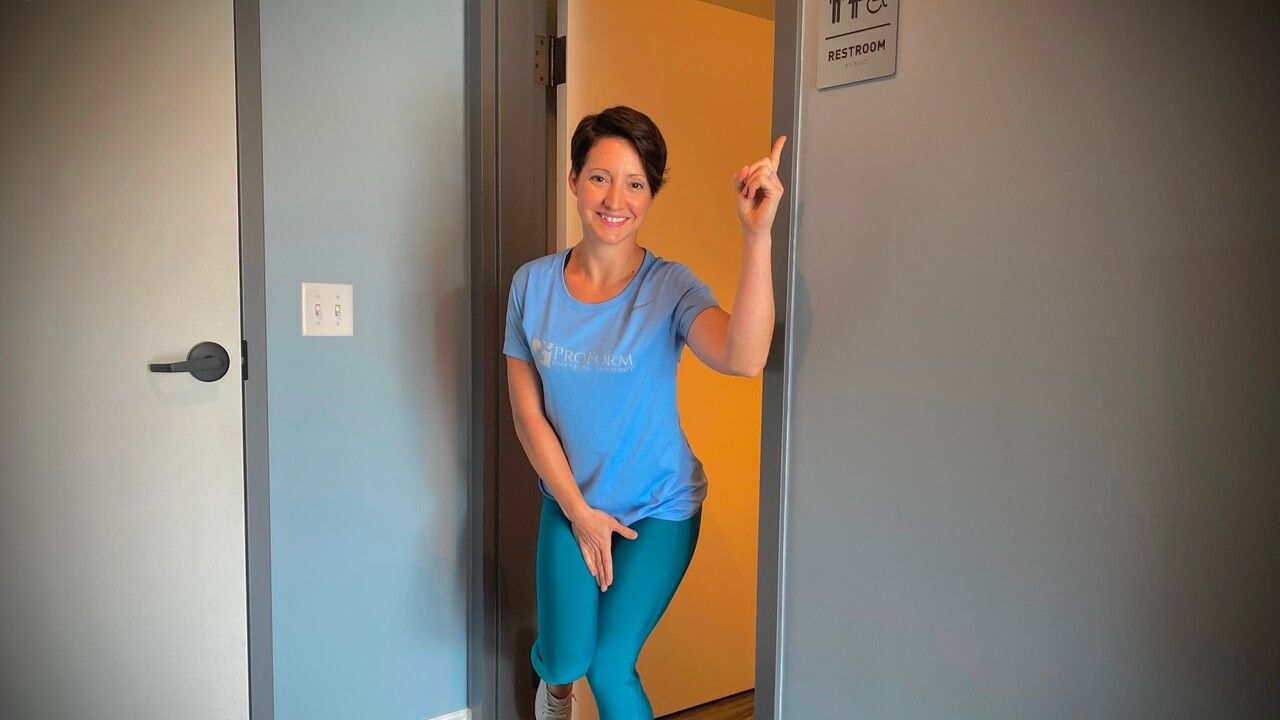The Link Between Running Pain and Your Pelvic Floor
Sep 10, 2021
By: Katie Burnham, DPT
“So you say my foot pain and bladder leakage is related?”
So you like to run, either for sport or recreation? You hit the pavement a couple times a week and maybe you notice some aches and pains in your knee, hip or even the ankle. Thinking of the common issues, you consider IT Band Syndrome or Patellar Tendonitis, maybe you thought your shoes were the problem. The odds are not with you that these diagnoses are the cause of your running pain. Let’s think outside the box for a moment. Perhaps, you remember that you’ve been occasionally dribbling on your runs (leaking a few drops of urine). It has been happening off and on for some time now though. That would never have anything to do with the hip, knee or even ankle pain….right? Whether you are a weekend warrior, marathoner, or working on completing your first mile, this blog will provide you with some insight on common signs and symptoms of pelvic floor dysfunction in runners.
The symptoms you experience during running can shed light on a potential pelvic floor dysfunction. For example, planning your run around restroom locations due to a frequent need to urinate may be a sign. Voiding a small amount of urine when you do visit the bathroom may also be a sign. So what’s this all about? Research has nodded towards myofascial trigger points within the pelvic floor leading to urinary urgency. Trigger points are like “knots” in the muscle fibers. They can develop in the muscles of the pelvic floor just as they would in the muscles of your neck or back, etc. Trigger points in other locations of the body have the potential to refer pain or symptoms elsewhere. Similarly, if you have a trigger point in the muscles of the pelvic floor, you may present with the symptoms of urinary urgency, frequency and leakage.
So what’s happing to the pelvic floor muscles during your run? It functions throughout all phases of running. During the flight phase (after pushing off), the pelvic floor is going through an eccentric or lengthening contraction. Then during strike or impact, the pelvic floor rebounds and goes through a concentric contraction to shorten. To help better grasp this idea, let’s consider a muscle group we can easily see. The biceps muscle in the arm goes through an eccentric or lengthening contraction when we straighten the elbow. When we bend the elbow, it goes through a concentric contraction and shortens. The pelvic floor muscles plays a vital role during running and are required to be both flexible and strong.
What does it look like if my pelvic floor muscles are tight versus weak? Often, a shortened stride with pain during hip extension or push off may indicate active trigger points in the obturator internus muscle (a deep hip external rotator). This would imply the muscle is tight and potentially shortened. Alternatively, symptoms associated with classic IT band Syndrome ie. pain in the knee or hip, may have their roots in a weak or elongated obturator internus muscle. So you can see that if the muscles of the “deep hip” (which are intimately involved in the pelvic floor) are not functioning optimally, it can impact the body all the way down the chain, even into the foot.
The take home message here is to not ignore the signs of a pelvic floor dysfunction. They may be the reason you are experiencing that nagging pain on those runs.
Stay Connected With News and Updates!
Join our mailing list to receive the latest news and updates from our team.
Don't worry, your information will not be shared.
We hate SPAM. We will never sell your information, for any reason.
